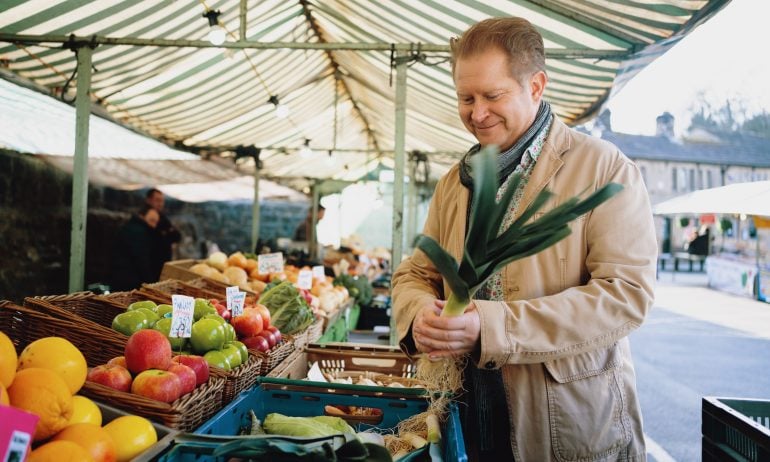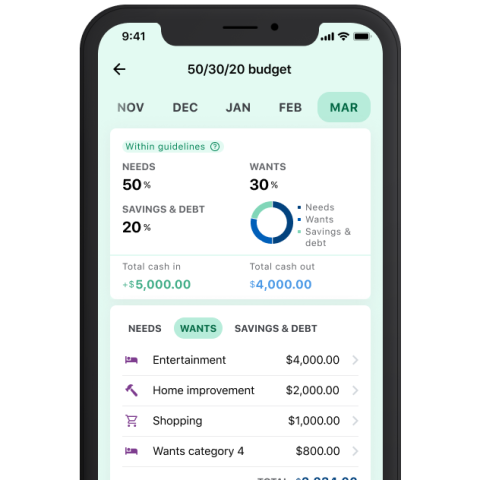6 Ways to Stretch Your SNAP Food Benefits

Many or all of the products featured here are from our partners who compensate us. This influences which products we write about and where and how the product appears on a page. However, this does not influence our evaluations. Our opinions are our own. Here is a list of our partners and here's how we make money.
The Supplemental Nutrition Assistance Program allows families and individuals in need to supplement their grocery budget with funds received via electronic benefits transfer (EBT).
Early in the pandemic, the U.S. Department of Agriculture provided extra emergency allotments for SNAP recipients. However, some states have already phased out those additional payments and they will end nationwide this month. In addition, for people receiving both SNAP and Social Security, January’s cost of living increase in Social Security payments may have reduced their food benefits by raising their income.
Vince Hall, chief government relations officer for the hunger-relief organization Feeding America, said in an email that ending the extra assistance cuts nearly $3 billion per month in food purchasing power from the economy.
And the populations that often rely on SNAP food benefits, like seniors, people with disabilities and families with children, will have an even harder time covering the cost of their groceries.
Between sticker shock at the grocery store due to rising prices and those recent changes to SNAP benefits, it’s important for households who rely on SNAP to get the most out of their budget.
6 ways to stretch your SNAP benefits
Here are some ways to make the most of your food budget during hard times.
1. Buy staple foods in bulk
Stocking up on basic food staples can help you maximize your monthly SNAP food benefits. In addition, many pantry essentials can serve as a base for cost-effective and satiating meals.
“Staple foods like rice, beans and pasta can be affordable and filling, making them a good way to make the most of your SNAP benefits,” certified financial planner Gabriel Lalonde said by email. “Look for deals on these items and consider buying in bulk to save even more money.”

2. Shop at farmers markets
You may be able to double the value of your SNAP food benefits by shopping at your local farmers market through a program called Double Up Food Bucks. Check the program’s website to see if your state is among the more than 25 participating. Double Up Food Bucks lets SNAP recipients purchase more fresh fruit and vegetables by matching the value of their benefits at participating markets and grocery stores.
You may also find that your money goes further at nearby farmers markets.
“Farmers markets can be a great way to stretch your SNAP benefits, as you can often find fresh, local produce at lower prices than you would at a grocery store,” Lalonde said. “Buying in-season produce can also be more affordable and nutritious than buying out-of-season produce that may have been shipped long distances.”
3. Use coupons and discounts
Try cutting some of your grocery costs by taking advantage of coupons. Even if you only save a small amount, it helps.
“Be on the lookout for coupons and discounts, which are often available at many grocery stores, “ Andrew Lokenauth, founder of BeFluentinFinance.com, said by email. “Special deals or loyalty programs can reduce the cost of your groceries. You can even look for coupons online or in your local newspaper.”
The USDA’s MyPlate App offers a tool called Shop Simple that may also help you save. “The Shop Simple with MyPlate tool helps people find savings in their area and discover new ways to prepare budget-friendly foods,” Jairea McClamb, a USDA spokesperson, said in an email.
4. Find out if you qualify for additional assistance programs
If you qualify for SNAP benefits, you may also be able to use additional assistance programs. For example, seniors who meet SNAP requirements can also participate in the Senior Farmers Market Nutrition Program, which allows seniors to receive discounts on local produce, honey and herbs.
The USDA also offers seniors a monthly food box full of nutritious foods through the Commodity Supplemental Food Program.
Even if you aren’t a senior, if you are low-income, you may still qualify for local or federal additional programs that help with food and other essentials, so it’s worth it to do some research. The USDA offers 16 nutrition assistance programs.
McClamb also pointed out The Hunger Hotline, which links people with emergency food providers in their community, as well as government assistance programs and social services. Call 866-3-HUNGRY (866-348-6479).
5. Plan your meals
You can help your SNAP dollars stretch a little more by planning your meals, especially if you focus on including staple foods.
“By planning your meals ahead of time, you can efficiently allocate your SNAP benefits,” Lokenauth said. “Making a grocery list and buying in bulk can save you money while minimizing food waste and making the most of your ingredients.”
Want meal inspiration using SNAP-eligible foods? The USDA has several recipes on its website that offer meal ideas, including seasonal ones. There’s also a cookbook called “Good and Cheap” by author Leanne Brown, featuring low-cost meals geared toward people receiving SNAP benefits. You can download the cookbook for free online, in either English or Spanish.
“Cooking with seasonal produce is another way to save money while preparing nutritious and budget-friendly meals,” Lokenauth notes.
6. Order your groceries
Finding fresh food and quality groceries can be hard if you have barriers beyond having the funds — like living in a food desert (a place that offers limited access to fresh and affordable food) or lacking reliable transportation.
But the good news is that you can use SNAP benefits to order groceries online. The USDA has a list of stores accepting SNAP for online purchases organized by state. Note that benefits can only pay for approved food items, not for delivery itself.
Check the website for participating retailers and compare their delivery costs. Also check into delivery services; Instacart and its rival DoorDash accept SNAP/EBT payments and have limited offers of waived delivery fees.
Ordering your groceries, even with a delivery fee, can help to save you time and money that may have otherwise been spent on transportation, lugging your groceries and going out of your way to find a decent grocery store.
Resources for other essentials
If you are struggling to cover food costs or other essentials, here are some additional things that might help:
Try calling 211 or searching for resources at 211.org, which can help you connect to assistance programs for food, mental health and more.
Search for local food banks and meal programs in your area. Feeding America helps you find food banks near you that also offer assistance with applying for national food programs.
Use this quick-help tool if you need help paying your bills.


